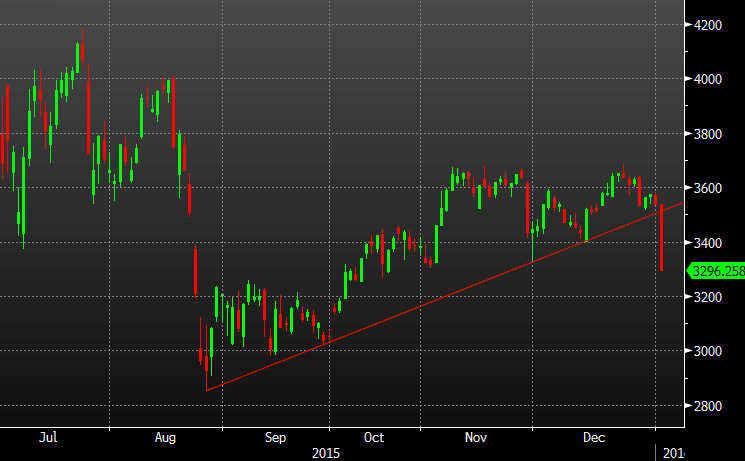Risk aversion started in China and went worldwide
There isn't a single good reason for the rout in Chinese stock markets (or anywhere else for that matter). But there are plenty of people trying to figure out what's going on.
Greg McKenna outlines four of the theories that are floating around:
1) Yuan weakness
The fix was higher as expected but then USD/CNH took off to 6.63 in a nearly 1% rally. Yuan softness isn't necessarily a reason for risk aversion but foreign investors are a big part of the story and no one wants the death-by-a-thousand cuts of a slow currency bleed.
2) The Caixin PMI
I'm tired of hearing about it at this point. It was soft at 48.2 vs 48.9 expected but not sell-all-your-stocks soft.
3) The short selling ban expiring
This one makes some sense. On July 8, China's securities regulator banned company bosses, senior management and investors who own stakes in businesses exceeding 5% from selling their shares on the secondary market for six months. On January 8 it marks six months and the market may think executive selling is coming.
4) The technical uptrend broke
There was trendline in the Shanghai Composite from the August lows that was tested 5 times and finally broke. It's one I'd been highlighting since October.

Heavy selling got underway after this line gave way.
Here's how Chinese authorities are feeling after the market had to be halted on the first trading day of the year.




